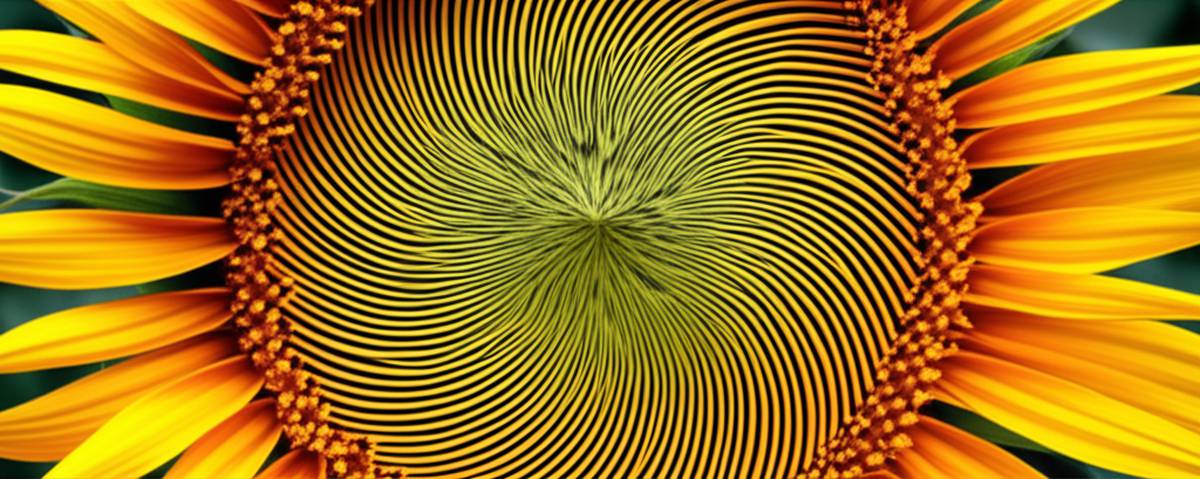Decoding Nature: The Fibonacci Sequence and You
Have you ever wondered if there’s a secret code underlying the beauty and complexity of the natural world? Well, there might just be! Today, we’re diving into the fascinating world of the Fibonacci sequence, a simple yet powerful mathematical concept that appears in the most unexpected places, from the spiral of a sunflower to the branching of trees. This isn’t just some abstract math concept; it’s a fundamental pattern woven into the fabric of our universe. Let’s explore how this sequence works and where we can find it all around us.
What is the Fibonacci Sequence?
The Fibonacci sequence is a series of numbers where each number is the sum of the two preceding ones, usually starting with 0 and 1. So, the sequence goes like this: 0, 1, 1, 2, 3, 5, 8, 13, 21, 34, and so on. Mathematically, it can be expressed as:
- F(0) = 0
- F(1) = 1
- F(n) = F(n-1) + F(n-2) for n > 1
This simple rule generates a sequence of numbers with remarkable properties, especially when related to the golden ratio.
The Golden Ratio: A Beautiful Connection
As you move further along the Fibonacci sequence, dividing a number by its predecessor gets closer and closer to a value approximately equal to 1.6180339887… This special number is known as the golden ratio (represented by the Greek letter phi, φ). The golden ratio is often associated with beauty and harmony, and its connection to the Fibonacci sequence is no coincidence. The ratio is found by dividing any number in the Fibonacci sequence by its predecessor. The further along the sequence you go, the closer the answer gets to the Golden Ratio.
Fibonacci Sequence in Nature: Where to Find It
Now, let’s get to the exciting part: discovering where the Fibonacci sequence pops up in the natural world. You might be surprised just how prevalent it is!
1. Flower Petals
One of the most common examples is the number of petals on a flower. Many flowers have a number of petals that corresponds to a Fibonacci number:
- Lilies often have 3 petals.
- Buttercups usually have 5 petals.
- Daisies can have 34, 55, or even 89 petals.
This arrangement isn’t just for show; it’s believed to be related to efficient packing and exposure to sunlight.
2. Spiral Arrangements
Spiral patterns are another frequent occurrence. Consider the spiral arrangement of seeds in a sunflower head. You’ll find two sets of spirals, one going clockwise and the other counter-clockwise. The number of spirals in each direction typically corresponds to consecutive Fibonacci numbers. Pinecones and pineapples also exhibit these spiral patterns. Even the internal spiral structure of nautilus shells follows this pattern.

3. Branching of Trees
The way trees branch out also often follows a Fibonacci sequence. The main trunk grows until it produces a branch, which then divides into two. One of the new stems branches again, and so on. The number of branches at each level often matches a Fibonacci number. This branching pattern allows for optimal sunlight exposure for all the branches.
4. Animal Kingdom
While less obvious, the Fibonacci sequence can even be found in the animal kingdom. For example, the breeding of rabbits, under idealized conditions, can follow the sequence. While real-world populations are much more complex, the underlying principle of growth and reproduction sometimes aligns with Fibonacci patterns. You may also see the Golden Ratio in proportions of animal bodies.
5. Human Body
Even the human body exhibits the golden ratio. For example, the ratio of: Your height to the distance from your head to your fingertips is roughly 1.618. This proportion exists in other elements of your body, too, such as the length of the bones in your fingers.
Why Does This Pattern Exist?
The prevalence of the Fibonacci sequence and the golden ratio in nature is not entirely understood, but scientists believe it’s related to efficiency and optimization. These patterns often result in the most efficient use of space, resources, and energy. For example, the spiral arrangement of seeds in a sunflower ensures that each seed gets the maximum amount of sunlight and nutrients. The branching of trees allows for optimal light exposure to all leaves. Ultimately, natural selection favors these patterns because they provide a survival advantage. The Fibonacci sequence, therefore, represents a fundamental principle of design in the natural world. To deepen your understanding of the Golden Ratio and its mathematical importance, resources like Investopedia can be quite helpful.
The Fibonacci Sequence and You
Understanding the Fibonacci sequence allows us to appreciate the intricate beauty and mathematical harmony that underlies the natural world. It shows us that seemingly complex phenomena can be governed by simple rules. Learning about these kinds of numerical sequences helps to understand resource optimization and planning, which can lead to building wealth and financial freedom. If you are new here, start here to learn more. Also, check out the blog for more insightful articles.
FAQs About the Fibonacci Sequence
1. Is the Fibonacci sequence only found in nature?
No, while the Fibonacci sequence is prominently found in nature, it also has applications in art, architecture, and computer science. The golden ratio, derived from the sequence, is often used in design to create aesthetically pleasing compositions.
2. Is the Fibonacci sequence always perfect in nature?
No, nature isn’t always perfectly precise. The Fibonacci sequence provides a model, but variations and approximations are common. Biological systems are complex, and other factors can influence growth and arrangement.
3. How can I learn more about the Fibonacci sequence?
There are numerous resources available online and in libraries. You can find books, articles, and videos that explain the Fibonacci sequence and its applications in detail. Exploring mathematical websites and science documentaries can also be helpful.


